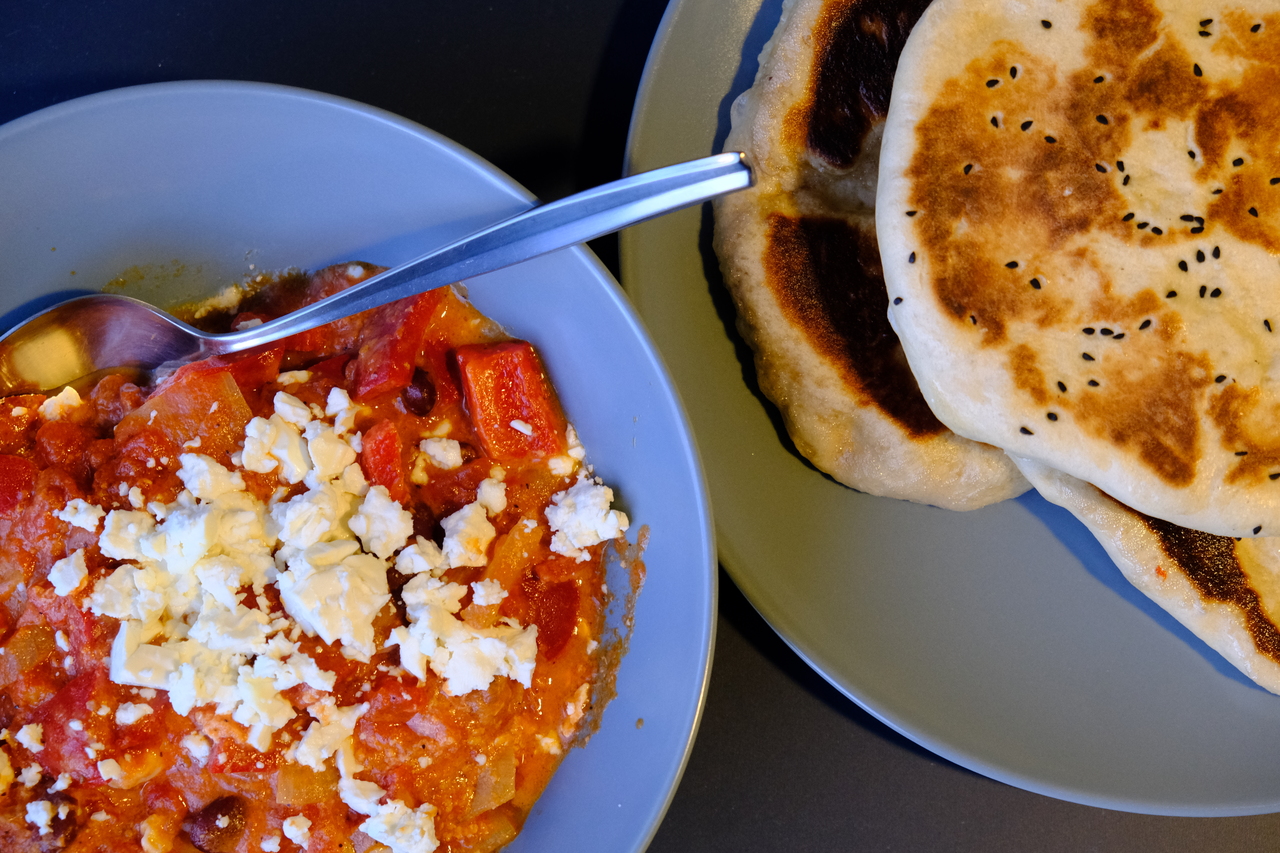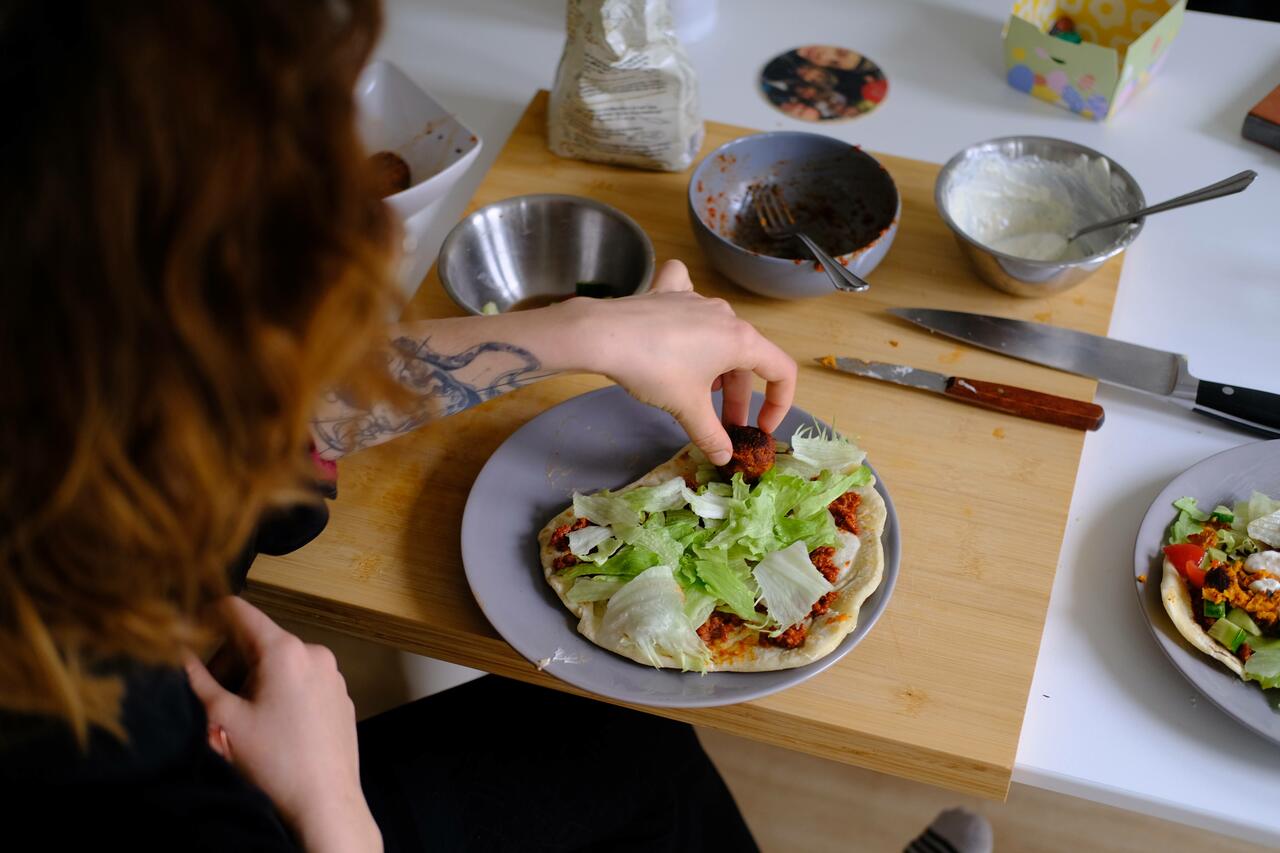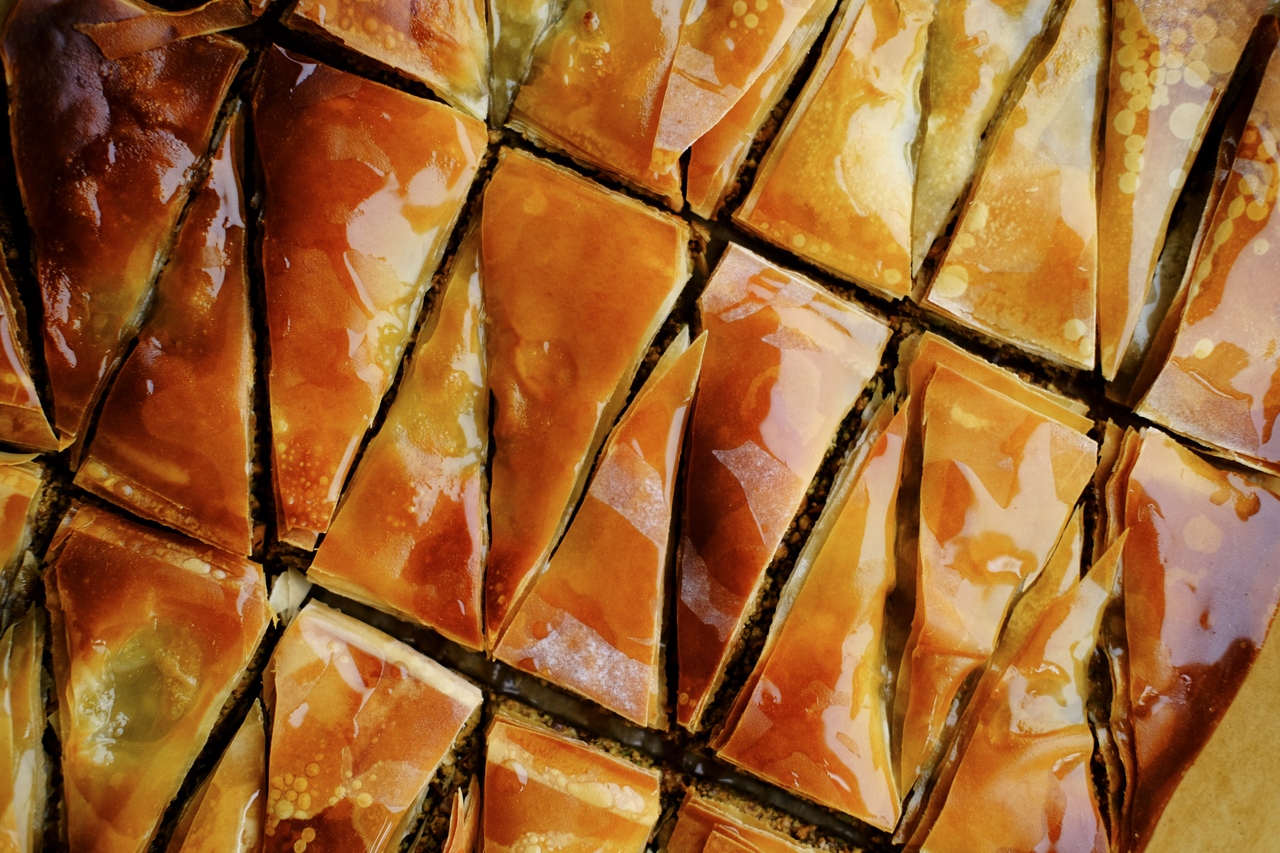Turkish cuisine is a fascinating fusion of culinary traditions with influences from Levantine, Egyptian, Greek, Balkan, and Central Asian cuisines.
Lots of vegetables dishes, rice, pasta, meats, mezes, salads.
Specific dishes I still want to make some time.
- Köfte
- Sarma stuffed grape leaves (a form of dolma or mahshi in Arabic)
- Adana kebabı
Desserts!
Menemen

Non-traditional menemen with freshly-baked pita in my kitchen in Helsinki.
Pronouncing this dish already feels delicious.
What I made today is definitely not a traditional recipe though. See the video by J. Kenji López-Alt for a much better idea of traditional menemen (and nice vibes in general). Didn't have proper green peppers, so I had to make do with the much too sweet red bellpepper. Worst of all, I added mixed beans in there too, because it was still in my fridge and had to be used before I went out to a cottage in mid-Finland for the weekend.
Okay, backing up a bit. Menemen is a Turkish dish often eaten for breakfast, kind of similar to the more widespread shakshouka. There is deep disagreement in Turkish society about the addition of onions to the dish. See Wikipedia for a short overview. Of course I added onions though. Sauté onion and pepper first, in a good glug of olive oil. Add grated/diced tomato and simmer for around ten minutes on relatively low heat. Season with salt and plenty of black pepper. Just before serving, throw in a couple of eggs, and very carefully scramble them through the sauce.
I served these with freshly baked, buttery pita breads. See the baker's percentage breakdown.
- Flour
- Water (50%)
- Dairy (15%) (although I used oat milk)
- Sugar (3%)
- Salt (2%)
- Yeast (2%)
- Olive oil (1%)
Upon serving, top menemen with crumbled feta.
Lahmacun

Turkish pizza with falafel and vegetables, as decadent brunch, in my apartment in Amsterdam, 2022.
Widely known in the Netherlands as "Turkish pizza" instead. Normally, one would prepare this with ground meat, but alternatives based on plant proteins work enviably well too. Lahmacun is relatively simple, so it is perfect for a relaxed Sunday brunch. See Wikipedia for rough directions.
I think it is nice to prepare a lighter, fluffy dough. Thus, leavened. See the pita recipe above. However, we want to roll these ones out rather thinly, so that when we bake them (in the spirit of tandoor, ideally) they become slightly crispy.
For the spread, fry a chopped onion with garlic and our plant protein crumbles (for lack of a better word). Whisk in tomato puree, thinning it out with a few drops of water. Add spices such as (spicy) paprika. Stir and simmer for some ten minutes, until it is nicely done and spreadable.
Get everything together. Spread the spread, and wrap in vegetables of your choice. We used some lettuce, cucumber, tomato. For a more decadent lunch, add some spicy falafel, and drizzle on a yogurt-based cucumber-onion pickle.
Baklava

A sheet of baklava in my mother's kitchen in Tilburg, 2022.
This immensely popular dessert can actually be made really easily. There isn't much of a recipe to speak of. I just referenced the preparation lemma on Wikipedia.
Baklava basically consists of three parts:
- Chopped nuts (in this case, pistachio)
- Filo pastry (thin, unleavened dough; individual layers brushed with fat)
- Syrup or honey (simple syrup is equal parts sugar and water, heated up and stirred until the sugar dissolves)
Of course, the filo pastry is quite challenging to prepare if you fancy doing this from scratch. Luckily, there are pretty good ones for sale.
Grind up the pistachio. Place some layers of filo in an oven sheet pan or tray. Spread pistachio. Place more filo on top. Brush over some fat and cut the whole slab into geometric forms that tickle your fancy. Bake for twenty to thirty minutes, depending on your desired level of crispiness. Once out of the oven, pour over your syrup or honey.